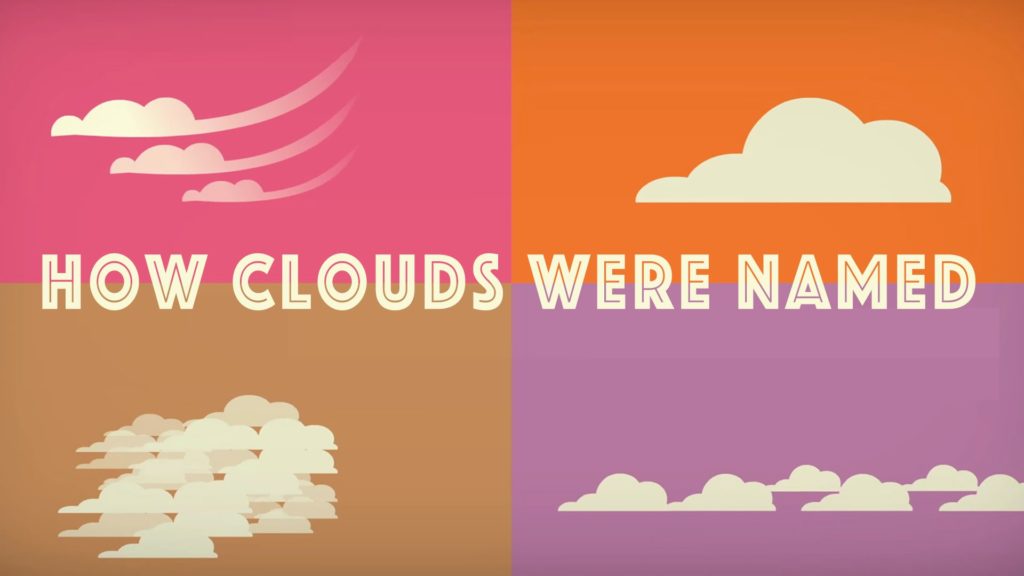How did clouds get their names?

Clouds are made up of water droplets and ice crystals floating in the sky. Clouds are the most important feature on the surface of the earth. Earth weather depends upon what kind of clouds form in the sky.
The sky is full of water. Most of the time sky is made up of Clouds that are full of water. The cooler air causes the water droplets to form water vapour.
How the cloud gets its names?
The names of the cloud get due to their heights in the sky. It appears as a low, medium, and high as well as their appearance.
According to the system, clouds are given names Latin names in correspondence to their appearance. The Latin word status correspondence to the layered cloud category. Connective clouds are as tall, as or taller than they are wide. These clouds look thick like a Cauliflower. The international cloud Atlas classifies clouds in terms of genera, species, and varieties, which allows a detailed deduction of their appearance.
Clouds are also classified by their altitude and appearance and their ability to create perception. These clouds look like joint cotton balls in the sky. there are different types of clouds named cirrus, cirrocumulus, altocumulus, altostratus, stratus, cumulus.
Stratus/Strato means flat layered and smooth. Cumulus/cumulo means heaped up and puffy like cauliflower. cirrus means high and wispy.
Stratus vapors are smooth clouds that usually embrace the complete atmosphere. They match fog that does not touch the surface. Usually, impetuosity doesn’t slump from stratus clouds, but seldom they may provide drizzle. Stratus clouds can be observed from Earth’s covering up to 2,000 m high. Stratus clouds are made of fluid, not ice, so when you see the Sun’s disk through them the edges look keen.
The idea that clouds character is when we often build up an idea that clouds character. Convective cloud samples are indicated by the origin word “cumulo” which suggests “heap” in Latin. These clouds look thick and stacked up, similar to a cauliflower. It’s pleasant to lie on the earth and stare at cumulus clouds to understand what aspects you can see in them.
Convective cloud models are shown by the root word “cumulo” which involves “heap” in the Latin language. Convective clouds may become very big and are curved on the roof.
One of the varieties of clouds you can see at intermediate heights is altostratus clouds. These clouds look smooth and uniform, like a blank wall or the frosting on often a cake.
These clouds usually cover the entire sky. In the more delicate areas of the cloud, the Sun may appear to be behind densely frosted libation or dimly obvious as a hairy round disk. Altostratus clouds frequently form first of storms that may provide constant presumption. These are usually clouds made of water droplets whose bottom is below 2,000 m elevation Low vapour types involve stratocumulus, cumulus, stratus, cumulonimbus, and nimbostratus. Rainwater clouds tend to have sharp corners, while ice clouds are wispier. Persistent contrails (airplane trails of moisture that don’t just leave as the aircraft flies) are high clouds as well.
When a thick cloud layer is near, any clouds in the courses above it will not be visible from the surface.






Responses